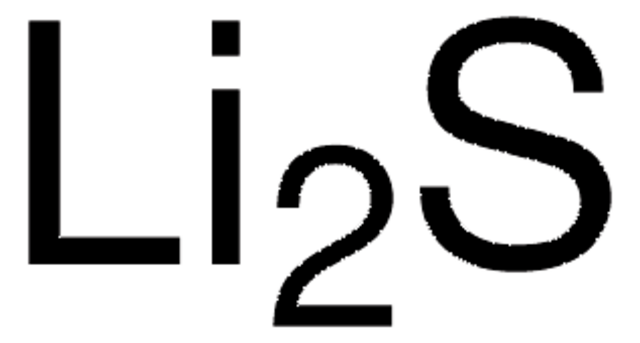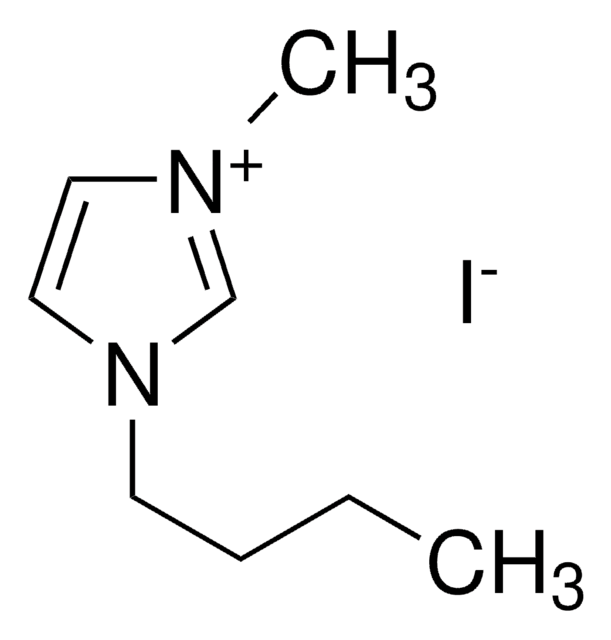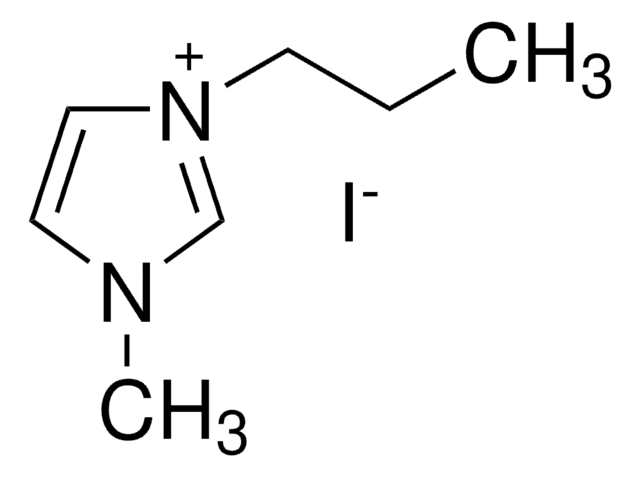439746
Lithium iodide
AnhydroBeads™, −10 mesh, 99.99% trace metals basis
Sinonimo/i:
Lithium monoiodide
About This Item
Prodotti consigliati
Nome Commerciale
AnhydroBeads™
Livello qualitativo
Saggio
99.99% trace metals basis
Stato
beads
Caratteristiche più verdi
Design for Energy Efficiency
Learn more about the Principles of Green Chemistry.
sustainability
Greener Alternative Product
Impurezze
≤150.0 ppm Trace Metal Analysis
Dimensione particelle
−10 mesh
Punto di fusione
446 °C (lit.)
Densità
3.49 g/mL at 25 °C (lit.)
Categoria alternativa più verde
Stringa SMILE
[Li+].[I-]
InChI
1S/HI.Li/h1H;/q;+1/p-1
HSZCZNFXUDYRKD-UHFFFAOYSA-M
Cerchi prodotti simili? Visita Guida al confronto tra prodotti
Descrizione generale
Applicazioni
- As a precursor to synthesize polymer-based electrolytes for dye-sensitized solar cell(DSSC) application via solution casting method.
- Li2S-P2S5-LiI crystalline inorganic-organic hybrid electrolytes with high ionic conductivity via liquid-phase synthesis for all solid-state batteries.
- As a redox mediator for Lithium–oxygen (Li–O2) batteries. It can facilitate redox reactions by shuttling charge carriers between electrodes, enabling efficient energy conversion.
Caratteristiche e vantaggi
- Excellent ionic conductivity at elevated temperature
- Good thermal stability
- Compatible with lithium-based battery materials.
Note legali
Non trovi il prodotto giusto?
Prova il nostro Motore di ricerca dei prodotti.
Accessorio
Codice della classe di stoccaggio
11 - Combustible Solids
Classe di pericolosità dell'acqua (WGK)
WGK 3
Punto d’infiammabilità (°F)
Not applicable
Punto d’infiammabilità (°C)
Not applicable
Dispositivi di protezione individuale
dust mask type N95 (US), Eyeshields, Gloves
Scegli una delle versioni più recenti:
Possiedi già questo prodotto?
I documenti relativi ai prodotti acquistati recentemente sono disponibili nell’Archivio dei documenti.
I clienti hanno visto anche
Articoli
Research and development of solid-state lithium fast-ion conductors is crucial because they can be potentially used as solid electrolytes in all-solid-state batteries, which may solve the safety and energy-density related issues of conventional lithium-ion batteries that use liquid (farmable organic) electrolytes.
Il team dei nostri ricercatori vanta grande esperienza in tutte le aree della ricerca quali Life Science, scienza dei materiali, sintesi chimica, cromatografia, discipline analitiche, ecc..
Contatta l'Assistenza Tecnica.










